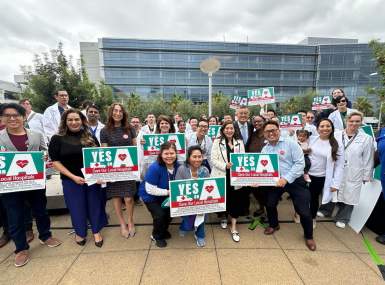Reform needed for Medicaid Inmate Exclusion Policy
Upcoming Events
Related News
The impacts of this policy are poorer health outcomes and quality of life for our residents — as more than 95 percent of inmates and those being detained eventually return to the community, bringing their health conditions with them.
It drives the over-incarceration of those suffering from mental health and substance use disorders, as our county jails are now among the largest behavioral health facilities in the nation.
It also puts an undue financial burden on local taxpayers to provide the full cost of health treatment services that would normally be shared among federal, state and local government partners.
In early 2019, the National Association of Counties (NACo) and National Sheriff’s Association (NSA) convened a joint task force to identify and raise awareness about the negative impacts of the MIEP.
The joint task force is made up of members representing both county law enforcement and local elected officials. The group’s goal was four-fold:
First, the group sought to educate federal partners and the general public on the negative impacts of the inmate exclusion policy.
The second goal was to amend this federal policy and identify local innovations that would complement legislative changes and strengthen the local health care safety-net for inmates returning to their community.
The third was to develop resources that provide context to the negative impacts of health care discontinuity for jail detainees — especially for individuals plagued by significant substance use disorders and mental illness.
The final goal was to consolidate information gleaned in Task Force discussions into a comprehensive report outlining recommendations and best practices that spanned federal, state and local governments.
Through the advocacy efforts of the task force, two key pieces of legislation have been introduced in the Senate (S. 2628 and S. 2626) that will amend Section 1905(a)(A) of the Social Security Act and protect access to health care benefits such as Medicaid, Medicare, CHIP and VA Health benefits for pretrial detainees. The Equity in Pre-Trial Medicaid Coverage Act and the Restoring Health Benefits for Justice-Involved Individuals Act were introduced last October. Since then, the task force has aimed to obtain bipartisan support for the bill, and secure companion legislation in the House.
Beyond federal policy change, the task force outlined ways in which states and counties can look to regulatory changes to build the local capacity to provide health services, such as:
creating flexibility around the Institutes for Mental Disease (IMD) exclusion policy
expanding mechanisms for data-collection and sharing
and strengthening partnerships between counties and the Department of Veterans Affairs.
The group also identified best practices for improving the provision of health care for justice-involved individuals, by reinforcing community partnerships, identifying individuals with health care needs, creating linkages to health service providers and leveraging federal grant funding.
The work of this task force over the past year has made the need for reform evident.
Amending federal policy is vital to turning around our nation’s behavioral health crisis, and the responsibility of change must fall equally among federal, state and local governments.
Attachments
Related News

CMS issues new guidance on Medicaid Community Engagement Requirements
On December 8, the Centers for Medicare & Medicaid Services (CMS) released a Medicaid and CHIP Services Informational Bulletin (CIB) directing states on how to implement the Medicaid community engagement requirements enacted under Section 71119 of the One Big Beautiful Bill Act legislation (Public Law 119-21), or H.R. 1.

California county sales tax measure backfills federal healthcare cuts
Santa Clara County, Calif. will raise an estimated $330 million each year from a sales tax to backfill lose Medicaid funding.
